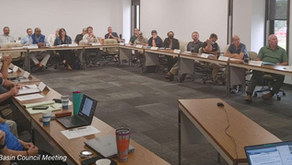Why I Take These 3 Tools to Every Asset Management Condition Assessment
- JD Solomon

- Feb 7, 2023
- 3 min read

I take these three tools to every asset management condition assessment I am a part of. Of course, the tools, techniques, and methods of the condition assessment change with the reason you perform it. And yes, my role has changed from a person doing the field assessments to someone leading or doing the quality assurance.
These three tools remain the same.
Condition Assessment Taxonomy
I keep the condition assessment taxonomy on my mobile device and a notecard in my field book. It is a straightforward 1 to 5 scale, with 5 being the worst. Each number has five basic categories associated with each rating, such as the percent corrective maintenance over the past five years. The taxonomy can be applied to all classes of assets.
I use the term taxonomy to reflect its definition of the technique used to make a classification. I reserve the term framework, meaning a basic conceptual structure, for those large questionnaire-type formats with different questions for every asset type.
I try to keep the condition assessment as concise as possible. The pocket taxonomy is a straightforward reminder to do so.
Handheld Vibration Analyzer
I usually encounter rotating equipment, or its effects, on most condition assessments. Handheld vibration analyzers generate a usable number for comparative analysis, are easy to use, have calibrated, and have basic training accessible. The tool is great for preliminary scans, whether a preliminary assessment or as part of a large quality assurance process. It is also safety friendly.
I love my TPI 9070 that I have been using for a decade. It provides vibration, bearing wear, and shaft alignment. It is durable and fits in the same box as my thermal camera.
Thermal Camera
Thermal cameras are great for establishing baseline equipment operating temperature, indications of insulation leaks, and fluid levels in opaque tanks or containers. Although I avoid touching process pipes and normally wear gloves, scanning process piping as you enter a production area is also a good health & safety measure.
I normally use my thermal camera for primary images in my reports and presentations. The temperature differentials tell the audience a story that a traditional image simply cannot tell.
I love my Flir E4 which I have also used for about a decade. The camera is still commercially available and has been out-positioned by the Flir E4, plus about 100 other thermal cameras that are newer and more affordable. There are many small details when choosing a device, and the camera type does not matter much for basic condition assessments. The main point is to have one. The E4 has never let me down and has proven durable in some rugged places.
The Field Condition Assessment Tools List
Reflecting on my Top 3 came as a follow-up to a client request for the tools I have used for field condition assessment over the past 30 years. My first reaction was, " are you kidding me?" They were not, and it has the added value of some reflection (and some old stories that I had almost forgotten).
Sensory Inspection
Vibration Monitoring
Thermal Imagining
Schmidt Rebound Hammer (concrete evaluation)
Skidmore-Wilhelm Device (bolt torque)
Velocity Meter (voids, primarily concrete)
Ultrasonics (mainly pipes)
CCTV (pipes)
Crack monitors
Pile Driving Analyzer (steel and concrete pile capacity)
Resistivity Tester (soils; transmission tower grounding)
Probe Rod
Munsell Color Scale
Split Spoon Sampler (soils)
Water Bailer
Turbidity Meter
pH Meter
Water Depth Indicator
Jar Test
Immunoassays (environmental contamination)
Megohmmeter (Electrical Insulation)
Volt-Ohm Meter
Acoustic Testing Meters (rotating equipment, ambient noise)
Of course, general-purpose measuring devices in my red toolbox go into the field, like a handheld level, a line level, measuring tapes, a portable scale, and a GPS (now replaced by the one on my phone.) And remember these 10 things before going to the field on a condition assessment.
Applying It
A condition assessment taxonomy, handheld vibration analyzer, and thermal camera are the three tools I take on every assessment management condition assessment. There are many field condition tools I have used in my career which are applicable depending on the context of the work. However, these three tools go into the field every time, regardless of context or my role.
JD Solomon Inc provides solutions at the nexus of the facilities, infrastructure, and the environment. Contact us for more information on our asset management ASAP approach, condition assessments, renewal & replacement forecasting, preventative maintenance programs, and reliability assessments. Sign-up for monthly updates on how we are applying reliability and risk concepts to natural systems.










Comments